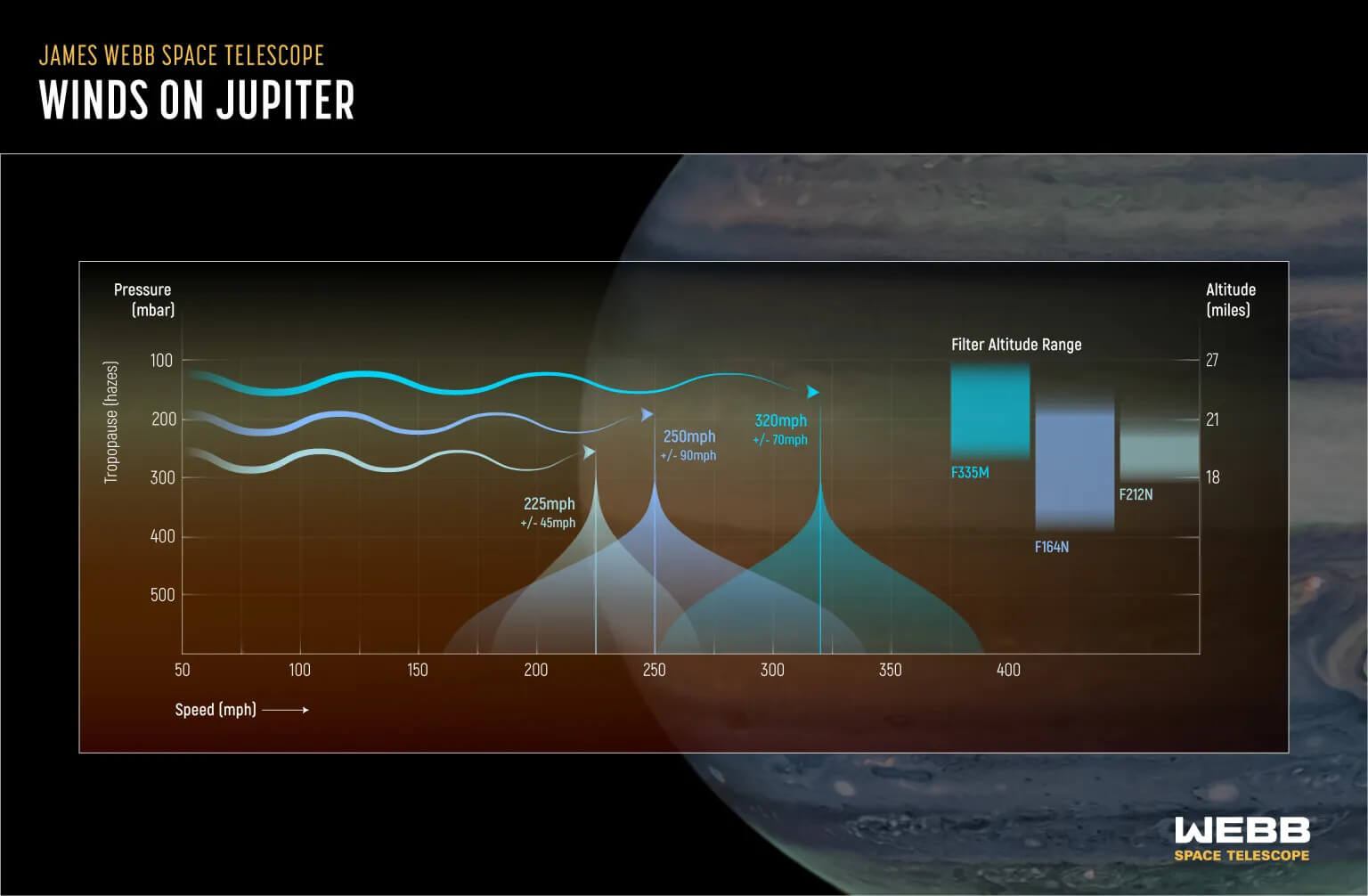Washington – NASA’s James Webb Space Telescope has made an out-of-this-world discovery in Jupiter’s atmosphere, revealing a high-speed jet stream previously unseen by astronomers. This jet stream — with speeds of more than 300 miles per hour — stretches 3,000 miles wide and hovers above Jupiter’s equator, well beyond its main cloud layers.
The exposure of this giant jet sheds light on how Jupiter’s famously turbulent environment interacts with its different layers and demonstrates the web’s unique capabilities in monitoring these aspects.
„This completely surprised us,” said study lead author Ricardo Hueso, from the University of the Basque Country in Bilbao, Spain. Media release. „What we’ve always seen as faint hazes in Jupiter’s atmosphere now appear as smooth features that can be tracked along with the planet’s rapid rotation.”
As part of the Early Launch Science program, scientists analyzed data captured by Webb’s Near-Infrared Camera (NIRCam) in July 2022. The project is designed to capture images of Jupiter at intervals of 10 hours, equivalent to one day on Jupiter. The images were taken using four different filters, each designed to detect changes in small features at various altitudes in Jupiter’s atmosphere.
While previous missions such as NASA’s Juno and Cassini and the Hubble Space Telescope have studied Jupiter’s changing weather patterns, Webb has already provided new insights into Jupiter’s rings, satellites and its atmosphere. This new understanding is the result of Webb’s ability to look deep into the infrared spectrum of the upper layers of Jupiter’s atmosphere, about 15 to 30 miles above its cloud tops. At this range, high-altitude fogs that would normally appear hazy are now resolved into fine detail.
Jupiter’s newly discovered jet stream travels at an astonishing speed of about 320 miles per hour, twice the sustained winds of a Category 5 hurricane on Earth. Located about 25 miles above the clouds, the jet stream is in Jupiter’s lower stratosphere.
By comparing Webb’s observed winds at high altitudes with winds measured in deeper layers by the Hubble Space Telescope, the research team was able to calculate the rate of change in wind speed with height, known as wind shear.
Although Webb’s remarkable resolution and wavelength coverage were instrumental in detecting the small cloud features used to monitor the jet stream, Hubble’s additional observations, taken a day after Webb’s observations, were essential to establishing and observing the basic state of Jupiter’s equatorial atmosphere. Development of convective storms not associated with the jet.

„We knew that the different wavelengths of Webb and Hubble could reveal the three-dimensional structure of storm clouds, but we were also able to use the timing of the data to see how quickly storms develop,” says Michael Wong of the University of California, Berkeley. Berkeley led the relevant Hubble observations.
The researchers look forward to further observations of Jupiter with Webb to determine whether the speed and height of the jet change over time.
„Jupiter has a complex but repeating pattern of winds and temperatures in its equatorial stratosphere, with cloud winds and fog measured at these wavelengths,” notes team member Lee Fletcher of the University of Leicester in the United Kingdom. „If the strength of this new jet is linked to this oscillating stratospheric pattern, we can expect the jet to vary significantly over the next 2 to 4 years – it will be very exciting to test this theory in the coming years.”
The study is published in the journal Natural Astronomy.
You may also be interested in:


„Oddany rozwiązywacz problemów. Przyjazny hipsterom praktykant bekonu. Miłośnik kawy. Nieuleczalny introwertyk. Student.
